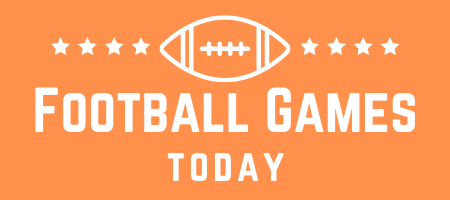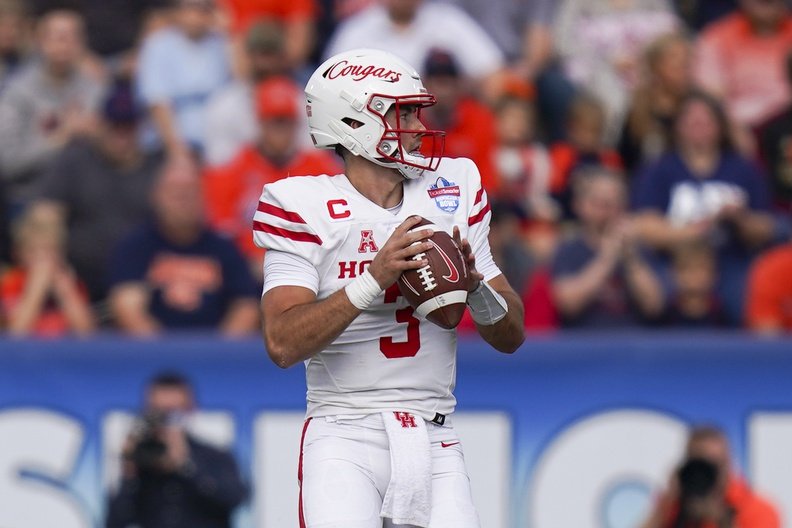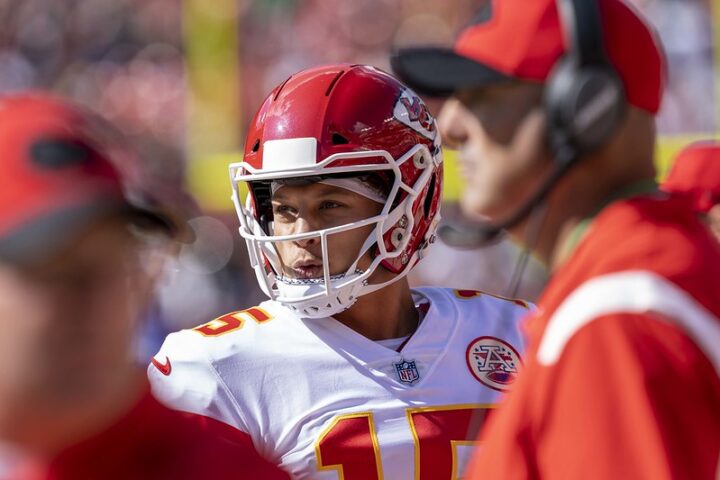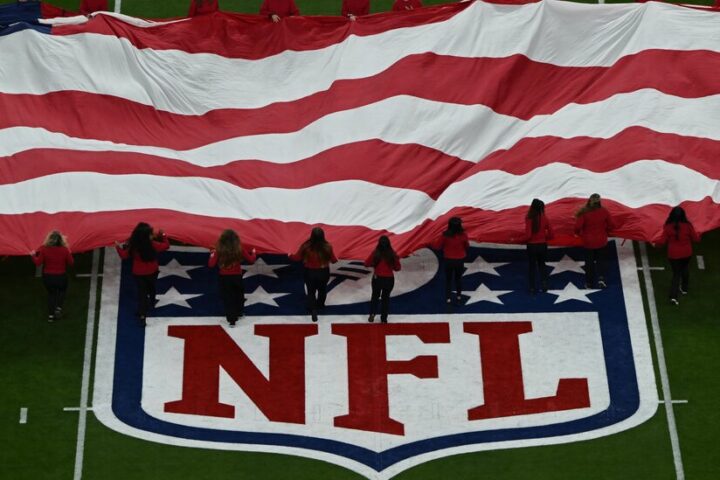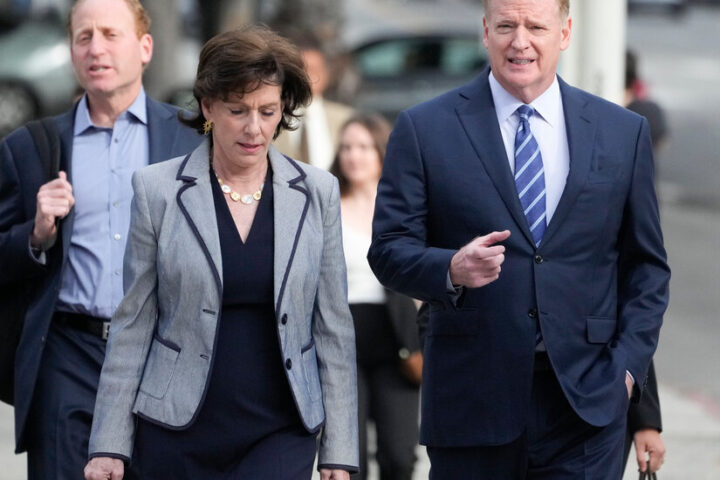One week is down, with so many more to go before the 2023 NFL Draft. In our post-Week 1 sit down with Shrine Bowl Director Eric Galko, Galko provides an update on where his team is at, as well as notes on character evaluation, the importance of perspective building, and more.
2023 NFL Draft Scout Talk: Week 1
Week 1 is in the books, and it’s time for a checkpoint report from the Shrine Bowl team. Last week, we were introduced to a number of processes the Shrine Bowl staff maintains during the regular season. One of those processes is the bi-weekly update, a recurring meeting every two weeks, in which scouts provide new insights on prospects, and propose moving players up or down the grading scale.
As is often the case for Galko and the Shrine Bowl, the two-week figure is a carefully thought out measure of time. It’s a figure that necessitates a coming together of sorts — a reconvening — at certain periods, but also allows scouts time and flexibility to watch film and research the right way, in the words of Galko. Freedom to work and clarity of communication.
It’s a system that’s borne fruit — not only for Galko and the Shrine Bowl but the scouts themselves. Last year, four Shrine Bowl staff members made the leap to the NFL, while three more went to major colleges. Galko takes pride in his staff and his process. But right now, there’s no time to stand on the ceremony.
A look inside the Shrine Bowl’s bi-weekly updates
In a callback to last week, Galko talks about the essence of the bi-weekly meetings organized by his team. As Galko said in the Week 0 2023 NFL Draft Scout Talk piece, the Shrine Bowl is looking for reasons to say “yes” to prospects. These meetings are all about finding those reasons.
“Our meetings are fairly efficient,” Galko says about the bi-weekly updates. “A lot of our focus is on deciding who’s an invite. Who is one of the best 120 seniors in the country, not ‘who’s not gonna make it.’ It’s much easier to go from ‘hey, that guy’s not playing well’ to ‘he’s playing well’ than having a guy check all the boxes and then having to take him off. At that point, [once they’re green], they are getting an invite when the time is appropriate, and I think we’re getting closer to that.”
Galko’s Director of College Scouting, Shane Coughlin, mirrors that sentiment. The two are noticeably in sync on the Shrine Bowl’s order of operations. Coughlin, in particular, emphasizes the impact that summer study has on in-season efficiency.
“It starts with a lot of trust and preparation, and a lot of work over the summer that’s either confirmed or denied early. Do we trust our summer scouting, and what can we tweak? What’s new? That’s objective information, like ‘he’s playing a new position, he’s stronger, he’s bigger.’ That kind of information is really important for early clean-up.”
Ahead of the first bi-weekly update, the Shrine Bowl staff doesn’t have any new green prospects. But Galko says things are progressing toward an uptick in that department, as they always do.
“I would say after Week 1 for us, no player became a green that wasn’t there before. But a lot of players became yellow, which is, ‘Hey, he’s pretty close. This guy is pretty much going to be an invite, but we want to see this from him.’
“For example, if a QB had shown that he was good last year, or good in Week 1, but I didn’t see a lot of downfield throws. I want to make sure he has that. We’re very specific in saying ‘hey, we’re looking for this.’
To lock in a Shrine Bowl invite, every detail matters
One lesson Galko emphasized in the Week 0 call was this — if you think something might be important, write it down. Never err on the side of leaving a detail off the report. That’s a mentality that allows the Shrine Bowl staff to work fast, when deciding whether to change grades or grant invites. This week, Galko says the prime question is: “What are we still looking for, and why do we want to change this grade?”
“For example, one guy who played really well — Alex Forsyth out of Oregon,” Galko extrapolated. “We talked about him quite a bit in our staff call. The questions are like ‘Okay, we had this grade on him. We want to push him up to here. But do we have enough evidence that this was a change, or just a really good game?’ He was really good on isolation blocks, which he was already good at. He was better on double-teams in that game. So it’s very specific feedback that we’re trying to focus on.”
Even with the overwhelming amount of details, the Shrine Bowl staff is moving with patience and an awareness that some questions can only be answered with more time and more film. But there is movement, and it may soon accelerate.
“There’s not a huge change here [after Week 1],” Galko expanded. “But I told our staff, by the third bi-weekly update, we might be pretty much done with our first invites. We don’t have a lot of time to wait five or six weeks until early November. We have to make our decisions really early. In a sense, we’re drafting players NFL teams will in October and November. We’re really early here. It can be terrifying, but I think it’s also valuable for our staff to say ‘yes’ on guys, rather than say ‘no.’
“It was a good check-in — we’re getting closer and closer to knowing who our first invites are going to be.”
Clayton Tune leads Week 1 Shrine Bowl standouts
Now we get into the weeds from Week 1. There are several names that filter into the conversation, but one 2023 NFL Draft prospect receives an especially glowing endorsement from Galko: Houston quarterback Clayton Tune.
Tune, of course, rallied his Houston Cougars back from a 21-7 deficit to beat the upstart UTSA Roadrunners in triple overtime. For the game, Tune completed 22 of 32 passes for 206 yards, three touchdowns, and no picks. He also racked up 15 carries for 51 yards and an additional score, as well as the game-winning two-point conversion — a diving play on a scramble drill that showcased his toughness and resolve.
Tune’s comeback performance against UTSA was a buffet of desirable NFL traits, and Galko made a point to express his confidence in his football ability. But for Galko, the most impressive part about Tune’s game is the mental fortitude and the easy confidence. That’s something Galko says is visible off the field as well.
“I’ve gotten a chance to know the kind of person he is,” Galko said of Tune. “And if you’ve known Clayton for even 15 or 20 minutes, you’re like A: That guy is super cool, but B: He’s also got this real confidence to him that we got a chance to see in football land.”

For Galko, Tune’s performance was enthralling, but it wasn’t a surprise.
“Knowing Clayton’s background, knowing what he’s overcome on the football field, and knowing who he is as a person — a guy who says ‘yes sir, no sir,’ but will also make jokes. He’s very confident, he’s a great learner — I saw him with Jordan Palmer, picking up three or four new things in just two days. I think he has a lot of those things that every GM and owner is going to like.”
An adaptable, quick learner with confidence. That’s the book on Tune, Galko says, and the receipts are right there on tape. According to Galko, Tune’s confidence and collected nature under pressure — a trait that draws his teammates to him — is something he also showed when he won the Manning Friday Night Lights competition this past summer.
“When everything’s going right, he’s the guy that everyone wants to go to, and he’s gonna play it cool. When things are going wrong, he’s gonna be right there as well. I’m bullish on what Clayton Tune can be on the field. But most importantly, I think every NFL team is going to be bullish on what he provides in the locker room as a leader.”
The importance of character when evaluating QBs
Galko raves about Tune’s character. But even he wants to make clear: It’s rarely as simple as “good character” or “bad character” for NFL draft prospects. Especially for quarterbacks, who often take on an increased role as leaders for their teams, having a QB with the kind of leadership style that meshes with the culture is of vital importance. Galko says you can’t force it — you have to find the right guy for you.
“I think Clayton and his mental makeup — his personality makeup — is impressive,” Galko said, using this year’s QB class as an example.
“And I think it’s going to lead to an impressive NFL career. But it’s just the way he is. He is different than Will Levis, than Anthony Richardson, than Bryce Young, and C.J. Stroud. It’s like your friends — they’re all different kinds of people, but you like them all. They’re different for different reasons. That’s the idea — and I think that’s where the subjective character piece for general managers and owners comes in.”
The word that Galko uses is “resonate,” and he draws from previous prospects to paint a picture. Trevor Lawrence is one example — by all accounts, a high-character individual. But even for him, some teams come away from meetings with Lawrence and love his leadership style. Others don’t feel his style resonates with their approach. Sam Howell was another more recent example that Galko used.
“Sam Howell came up a lot in talks with teams,” Galko said. “I had one team say, ‘hey, his personality makeup — it’s not for us.’ But his teammates love him. Then I talk to Malik Willis, and he’s like ‘Sam’s my guy.’ People that got a chance to work with him and hang out with him for a while in the draft process were like ‘that dude, I’ll go through a wall with.’”
True to imperfect human form, the conclusion is largely up to the perspective and perception of the individual. GMs and owners, in particular, need more than a cultural fit to invest high-end capital at QB. They need someone who can command the culture.
“I’ve talked to Will Levis, Clayton Tune, Bryce Young a little bit, very briefly C.J. Stroud, Anthony Richardson — all these guys are good dudes. You’d want to hang out with all of these guys. But they’re different — they’re very, very different. That’s why it’s fun, but also as a GM, it’s terrifying, trying to figure out what personality is not just going to be your friend, but also the CEO of your company that you’re leading.”
Other 2023 NFL Draft prospects who impressed in Week 1
The names don’t stop at Tune. Galko and Coughlin have many others on their mind, as they fire off names who impressed them in the Week 1 college football slate.
Galko mentions CB Cory Trice and WR Charlie Jones from Purdue, Forsyth from Oregon, TE Brant Kuithe from Utah, CB George Nyakwol from Rice, and Georgia RB Kenny McIntosh as a few who jumped out when the staff convened after Week 1.
Beyond those, Galko also spoke glowingly about Florida G O’Cyrus Torrence, who played well in his debut against Utah. Torrence was a dominating force at Louisiana and didn’t miss a beat against Power Five competition. On Torrence, Galko said: “This dude is one of 20 non-quarterbacks in this class that I would love to have as a starter on my team.”
Coughlin, in a representation of just how large the Shrine Bowl’s scope is, name drops almost a half-dozen FCS players, and provides an impromptu scouting report of his own, on two South Carolina State standouts.

“Jeblonski Green, the EDGE,” Coughlin began. “He’s playing a little more two-point stance this year than what I saw last year, but he squeezes the C-gap better than anyone I’ve seen so far. A little sawed-off, a little shorter, but has natural leverage and the requisite leg drive to squeeze the tackles. I think he has really good run-defending instincts — almost took a fumble to the house. He’s super exciting — explosive, strong, unique build. I’m not totally sure what he does at the next level, but I know he’s an NFL athlete.”
“The other one is Shaq Davis. He caught two or three touchdowns in the Celebration Bowl last year. A 6’4″ big, long, lean, stringy frame with ball skills, good timing, good leaping, good red-zone catches. Those are two guys that pop out as NFL bodies right away.”
Coughlin had to leave the call early, but that didn’t stop him from going out of his way to text about two more prospects, this time from Howard University: Anim Dankwah — a massive offensive tackle with “rare” height — and Darrian Brokenburr — an NFL-sized edge rusher with special-teams ability. Coughlin says both are studs, and that Brokenburr’s prototype looks more muscular.
In case you needed any more confirmation, Galko and Coughlin live and breathe scouting. It not only shows in their work but permeates through the rest of the Shrine Bowl staff.
A closer look at the scope of the Shrine Bowl’s scouting process
At this point, we know how comprehensive the Shrine Bowl’s scouting process is. We also know, however, that the all-star game only deals with upperclassmen. So does the Shrine Bowl simply gloss over underclassmen when evaluating, seeing that those players aren’t eligible for invites? The answer, from Galko, may surprise you.
“Our staff doesn’t care about the Shrine Bowl when they’re scouting,” Galko said bluntly. “I want them to know and evaluate and have context on the guys that we’re pretty sure are going to be PFAs or less. Because that’s their job. They own an area, they own a conference. It’s really important for us to have that.
“Because A: If you say we’re just scouting for an all-star game, you’re going to forget about guys on the back end of that. And when those guys emerge, you’re not prepared. It builds in bias in the process. So the people who do the SEC or the ACC for us — they have to know every player in their area that matters. To that point, that may be underclassmen as well.”
Galko does make clear that there’s more to gain from spending additional time on QBs like Hendon Hooker and Levis as opposed to Richardson, who’s not all-star-game eligible. But Galko also says it’s important to have an awareness of Richardson and his game, not only for scouting purposes but also for perspective building.
“Perspective building is big,” Galko reiterates. “When I talk to NFL GMs or area scouts or whoever else it may be, I may ask ‘Hey, where does the senior class stack up with the underclassmen in this year’s class?’ I want to know how Levis, Hooker, Tune, Leary — all the guys we’ve talked about today — how they stack up with Young, Stroud, and Richardson. It’s really important to have that national context and perspective.”
So while the Senior Bowl invites may only go to upperclassmen, the attention is not reserved to them alone. To have an accurate perception of their ideal prospects, the Shrine Bowl staff must know where they stand in relation to the underclassmen. At the end of the day, that impacts draft positioning.
The Shrine Bowl’s scope is incredibly large, and at this point, Galko knows how to get the most out of it. He’ll send available staff to local games to get 1-on-1 time with coaches and players. In fact, according to Galko, less publicized games allow for less crowding and more access, so the staff gets more from attending those games live than a highly-coveted matchup like Florida vs. Kentucky.
Galko also accredits NFL area scouts for their assistance in the process. He has a constant interface with those scouts, drawing from their local knowledge to compile a more complete picture of a prospect.
“NFL teams are our partners in this, and we leverage them quite a bit on the road.”
Spotlight on the trenches ahead of Florida vs. Kentucky
Looking ahead to Week 2, the most marketable matchup might be that of Florida vs. Kentucky. Richardson and Levis will go head-to-head in this one, but there’s talent to watch beyond them. There’s Torrence on Florida’s offensive line, whom Galko mentioned earlier. But there’s also an intriguing matchup on the other side: Kentucky’s Tashawn Manning vs. Gervon Dexter.
Manning is another prospect Galko has his eye on. The 6’4″, 330-pound lineman transferred to Kentucky from Auburn. His size naturally brings appeal, but he also has positional versatility at both guard spots. Another thing that Galko likes from Manning is the progression he’s shown in managing his size — something that can be a struggle for offensive linemen.
“Bigger guys like that can sometimes just get away with being wide human beings at guard,” Galko explained. “Sometimes guys come at them and they just deflect the blow. But I think [Manning’s] gotten a lot better at setting his feet, staying with better pad level, and using his hands.
“The reason NFL teams want big guys like that is because your margin of error as a blocker is way higher. You can have a bad block, but if you’re wide enough and strong enough, the job can be partly done. Manning already had that when he was at Auburn, after switching from D-Line to O-Line. But I think now, he’s refining himself.”
Acclimating amidst change is an underrated quality in a player
Something else that Manning has shown twice now — first with his switch from DL to OL, and second with his transfer from Auburn to Kentucky — is his ability to acclimate to change and adapt as a player. What strikes Galko is that Manning hasn’t just made himself at home at Kentucky, but he’s quickly made himself to be a leader in the locker room. Galko emphasizes how hard it can be to find that kind of player.
“It’s a big deal, and I think we undervalue that,” he said. “The transfer portal — it’s very easy to be like ‘Oh, I’ll just transfer and go here.’ And for a lot of kids I talk to, it doesn’t work out. Especially for guys that aren’t top, top prospects. They think ‘Oh, I’ll just transfer here, and I’ll start because the coach said that,’ and they’re backups.”
Sometimes players need a change of scenery. But exiting one environment is only half the battle. You then have to choose the right destination and then make the most of that destination. Nothing is handed to players anymore. And Galko says that’s one way in which Manning has separated himself.
“The really important thing for Manning was, I talked to coaches on their staff — especially their strength coach — and he immediately talked about how he’s great to be around, everybody loves him, he’s already become a team leader. Talking about picking your friends here — NFL teams want a guy who’s going to adapt to the NFL on the field and off the field.”
We often get lost in the details on the field, but as Galko shows, the off-field details are just as important for teams looking to invest in talent. Adaptability is one quality that’s extremely translatable, and it can be the difference between going on Day 3 and going without a call.
How often do stagnated players drastically change their outlook?
With acclimation as the topic, there’s another question that comes to mind — especially for the Shrine Bowl. Since the Shrine Bowl deals with upperclassmen exclusively, a great number of fourth, fifth, and even sixth-year seniors enter consideration. Within that large prospect pool, there are always many who have years of experience but stagnate and fail to show development. Do those players ever drastically change their outlook in their final year?
“It’s a rarity, and a very intensive scope,” Galko replied. “We’ve got 15,000 players in our database, and if it’s 20 players that do that, it’s important. But it’s not many.”
An example from recent memory that comes to mind for Galko is former Kentucky LB Jamin Davis. Davis ascended from out of nowhere in 2020 and was selected in the first round of the 2021 NFL Draft by Washington. Galko says that kind of ascent is rare. When it happens, it’s important to ask why. In a way, it hearkens back to the raw vs. underdeveloped conversation from last week’s call.
“What happens more often is that players are able to show things they weren’t able to show previously because of their offensive or defensive scheme, or people around them or in front of them. That’s usually what changes,” Galko clarified. “But if players are changing drastically, you as a scout should perk your ears up and be like ‘What happened? Why is this guy doing this?’”
For Davis, Galko says, it was high character and athletic talent that allowed it all to come together for him mentally in his final season. But it’s different for every prospect who does ascend, and it happens so sporadically that it’s not a routine exercise.
This is where it all comes together for the Shrine Bowl staff. Surprises like this are rare — not just because players don’t commonly remake themselves after two or three years as a starter, but also because the Shrine Bowl staff has done all the necessary work in the summer prior.
An example from Week 1, for Galko, is Michigan State EDGE Jacoby Windmon. Windmon exploded onto the scene with four sacks, making himself known to many who’d never heard his name. But the Shrine Bowl knew who he was and knew a breakout was on the radar.
“Having four sacks in any game is impressive, but Windmon’s talent is not out of nowhere. At UNLV, you can watch him — I think against San Diego State, he should’ve had four sacks in that game.”
That’s the goal for the Shrine Bowl: Being as prepared as possible, so they can work fast and effectively when the season rolls around. Nevertheless, there are occasionally those unexpected risers, who are difficult to prepare for. Galko doesn’t deny the uncertainty but says exploring the context of the ascent helps guide evaluators to clear answers.
“It’s almost a scary situation when guys do it because it is so rare. Finding out why is most important.”
